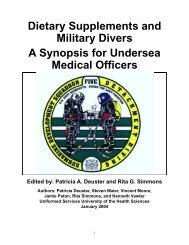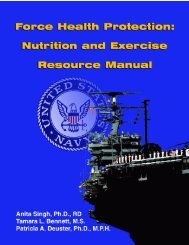Traumatic Brain Injury and Effects of Altitude - Human Performance ...
Traumatic Brain Injury and Effects of Altitude - Human Performance ...
Traumatic Brain Injury and Effects of Altitude - Human Performance ...
Create successful ePaper yourself
Turn your PDF publications into a flip-book with our unique Google optimized e-Paper software.
<strong>Traumatic</strong> <strong>Brain</strong> <strong>Injury</strong> (TBI) <strong>and</strong> <strong>Effects</strong> <strong>of</strong> <strong>Altitude</strong>:An Analysis <strong>of</strong> the LiteratureAll <strong>of</strong> the hypoxia studies identified <strong>and</strong> included for this review involved patients with moderate <strong>and</strong>/orsevere TBI. None included patients with mild TBI, <strong>and</strong> none found reported differential effects <strong>of</strong>hypoxia based on level <strong>of</strong> TBI severity.Our search captured six recent studies <strong>of</strong> hypoxia as a risk factor in TBI outcome (Appendix: Table 4). Ofthese, four retrospective studies <strong>and</strong> one prospective study found a strong association between hypoxia<strong>and</strong> TBI outcome. Three identified a significant relationship between hypoxic episodes <strong>and</strong> patientmorbidity, disability <strong>and</strong>/or mortality (Chi et al., 2006; Davis et al., 2009; Jiang et al., 2002), while tworeported an association between hypoxia <strong>and</strong> functional outcome. Ariza et al. (2004) observed arelationship between pre-hospital hypoxia <strong>and</strong> prefrontal outcome, evinced by impaired attention,reaction time, mental flexibility, fluency <strong>and</strong> verbal memory. Chang et al. (2009) found that thefrequency <strong>and</strong> duration <strong>of</strong> brain tissue hypoxia in the intensive care setting was related to subsequentpoor functional outcome as assessed in various domains such as personal care, home management,social integration, work/school activity, ambulation <strong>and</strong> executive functioning.While Manley’s (2001) prospective study found no relationship between hypoxia <strong>and</strong> TBI outcome, theauthors identified several limitations <strong>of</strong> this study to include data recording artifact from the datacollection environment.Of particular relevance to this review is the observation that both hypoxemia <strong>and</strong> hyperoxemia(increased arterial blood oxygen saturation) are potentially dangerous to patients with TBI (Davis et al.,2009). This is consistent with contemporary practice that cautions against aggressive hyperventilationduring acute phases <strong>of</strong> severe TBI <strong>and</strong> pre-hospital care (Bullock & Povlishock, 2007). Hyperventilationcan cause hypocapnia -- a reduction in the arterial pressure <strong>of</strong> carbon dioxide (PaCO 2 ) – which leads tovasoconstriction in the brain. This restricts circulation <strong>and</strong> oxygenation, which in turn exacerbatesischemia <strong>and</strong> hypoxia. Hyperventilation can be effective to reduce ICP in some patients (Letarte, 1999).However, its use is recommended only in patients with clear signs <strong>and</strong> symptoms <strong>of</strong> brain herniation <strong>and</strong>oxygen delivery should be monitored. Prophylactic hyperventilation (PaCO2 <strong>of</strong> 25 mm HG or less) is notrecommended for severe TBI patients, <strong>and</strong> should be avoided during the first 24 hours post-injury whenCBF may be critically reduced (Bullock & Povlishock, 2007).Papadimos (2008) proposes that inhaled nitrous oxide (INO) may be an effective intervention to supportoxygenation while reducing the risk <strong>of</strong> inflammation <strong>and</strong> intracranial pressure, especially in patients whohave TBI in combination with acute respiratory distress. Rodent studies show results from this techniquewith potential translational value, as have at least two clinical case reports (Papadimos et al., 2009;Vavilala et al., 2001).INTRA-CRANIAL PRESSURE/BLOOD PRESSUREAlterations in blood pressure <strong>and</strong> oxygenation that could normally be tolerated well by the uninjuredbrain are potentially damaging to the injured brain. Secondary ischemic damage is more common inpatients who have sustained hypoxia, hypotension, or elevated ICP. It is also more common <strong>and</strong> severein more severe TBI <strong>and</strong> is found in the majority <strong>of</strong> patients who die <strong>of</strong> head injury (Chan et al., 1992;Graham et al., 1989; Marion et al., 1991).September 14, 2010 17


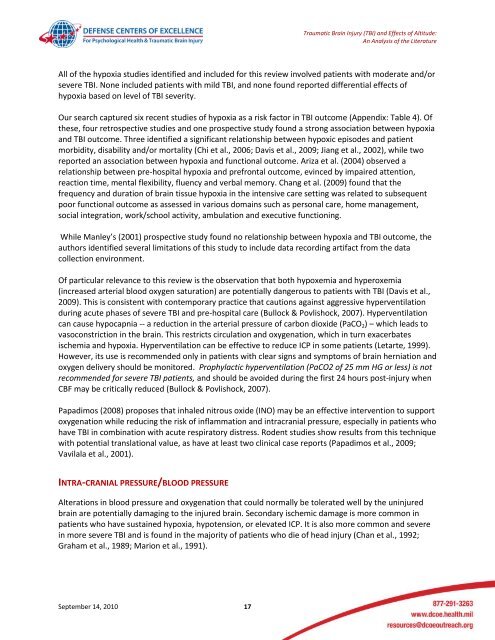


![Body Composition and Military [PDF] - Human Performance ...](https://img.yumpu.com/43269347/1/190x245/body-composition-and-military-pdf-human-performance-.jpg?quality=85)
![Tips for Grocery Shopping [PDF]](https://img.yumpu.com/37447379/1/190x245/tips-for-grocery-shopping-pdf.jpg?quality=85)
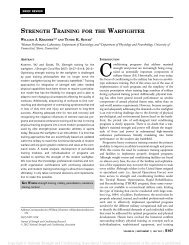
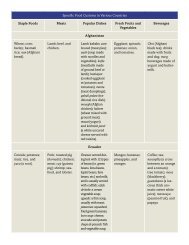
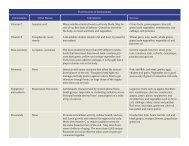
![Synthetic Drugs [PDF] - Human Performance Resource Center](https://img.yumpu.com/37447322/1/190x245/synthetic-drugs-pdf-human-performance-resource-center.jpg?quality=85)
